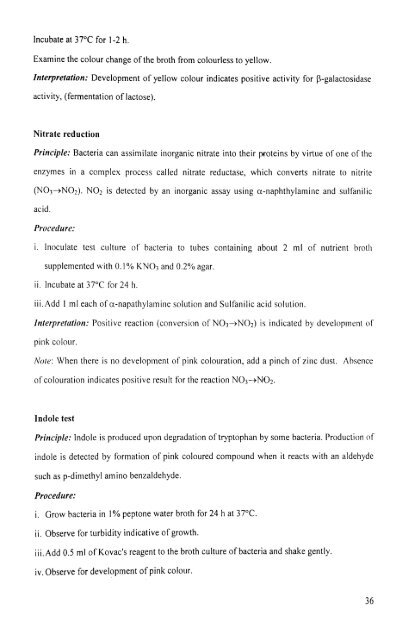, Diagnosis an-&& of Shrimp Diseases - Central Institute of ...
, Diagnosis an-&& of Shrimp Diseases - Central Institute of ...
, Diagnosis an-&& of Shrimp Diseases - Central Institute of ...
- No tags were found...
Create successful ePaper yourself
Turn your PDF publications into a flip-book with our unique Google optimized e-Paper software.
Incubate at 37°C for 1-2 h.Examine the colour ch<strong>an</strong>ge <strong>of</strong> the broth from colourless to yellow.Inferprelation: Development <strong>of</strong> yellow colour indicates positive activity for P-galactosidaseactivity, (fermentation <strong>of</strong> lactose).Nitrate reductionPrinciple: Bacteria c<strong>an</strong> assimilate inorg<strong>an</strong>ic nitrate into their proteins by virtue <strong>of</strong> one <strong>of</strong> theenzymes in a complex process called nitrate reductase, which converts nitrate to nitrite(N03+N02). NO2 is detected by <strong>an</strong> inorg<strong>an</strong>ic assay using a-naphthylamine <strong>an</strong>d sulf<strong>an</strong>ilicacid.Procedure:i. Inoculate test culti~re <strong>of</strong> bacteria to tubes containing about 2 ml <strong>of</strong> nutrient brothsupplemented with 0.1% KN03 <strong>an</strong>d 0.2% agar.ii. Incubate at 37°C for 24 11.iii.Add 1 ml each <strong>of</strong> a-napathylami~ie solution <strong>an</strong>d Sulf<strong>an</strong>ilic acid solution.Inierpretrrtion: Positive reaction (conversion <strong>of</strong> NO3-+NOz) is indicated by development <strong>of</strong>pink colour.Note: When there is no development <strong>of</strong> pink colouration, add a pinch <strong>of</strong> 7inc dust. Absencc<strong>of</strong> colouration indicates positive result for the reaction N03-+N02.Indole testPrinciple: Indole is produced upon degradation <strong>of</strong> tryptoph<strong>an</strong> by some bacteria. Production <strong>of</strong>indole is detected by formation <strong>of</strong> pink coloured compound when it reacts with <strong>an</strong> aldehydesucl~ as p-dimethyl amino benzaldehyde.Procedure:i. Grow bacteria in 1% peptone water broth for 24 h at 37°C.ii. Observe for turbidity indicative <strong>of</strong> growth.iii.Add 0.5 ml <strong>of</strong> Kovac's reagent to the broth culture <strong>of</strong> bacteria <strong>an</strong>d shake gently.iv. Observe for development <strong>of</strong> pink colour.
















